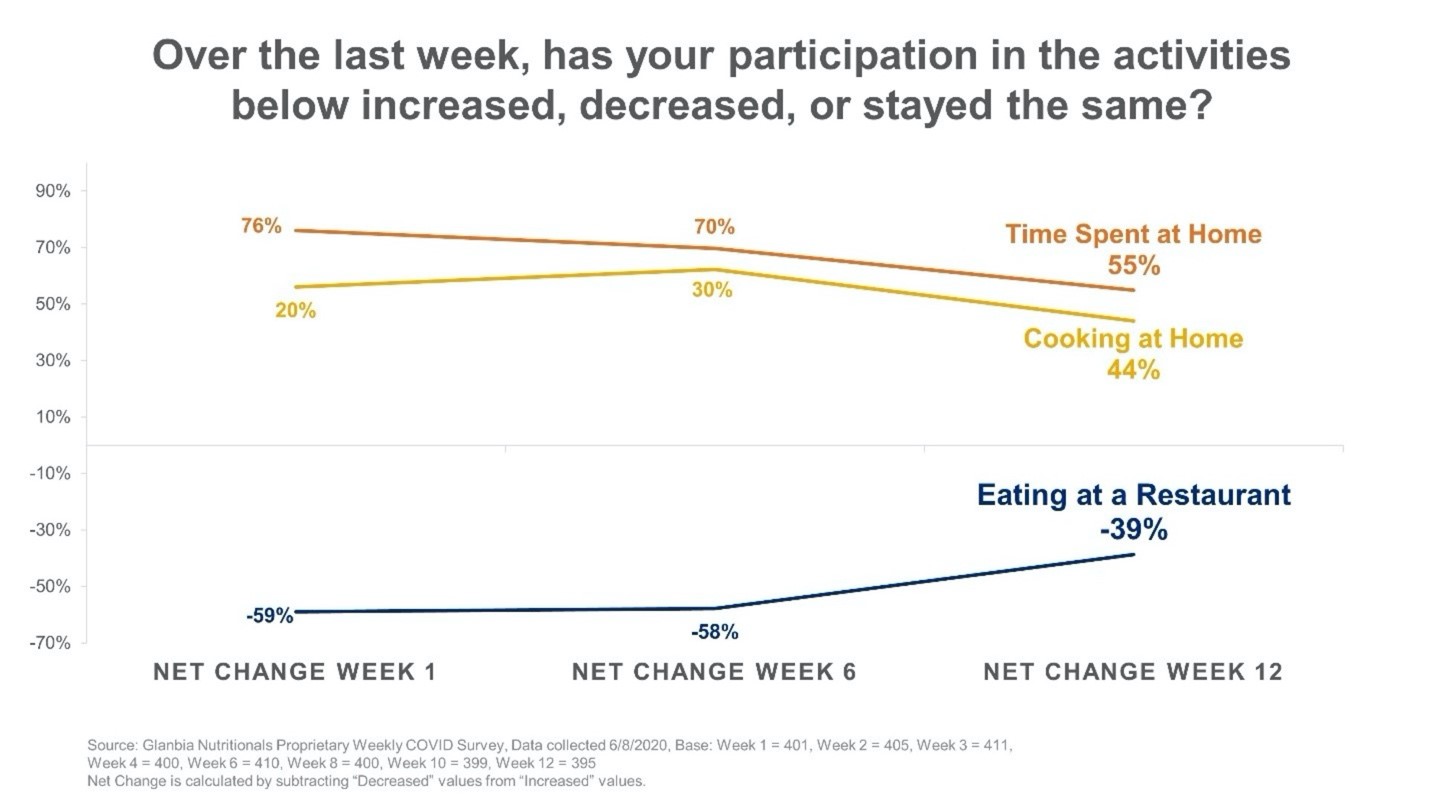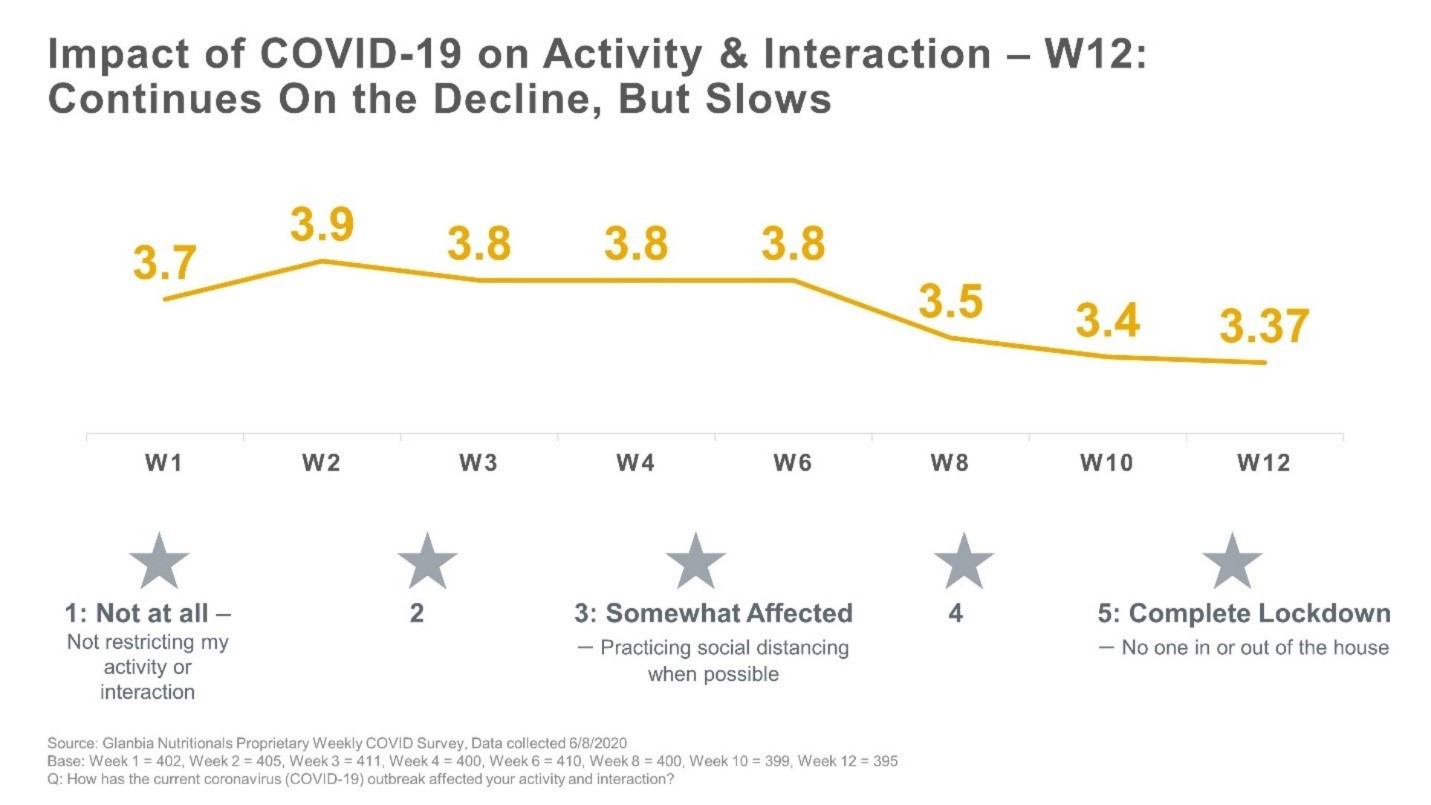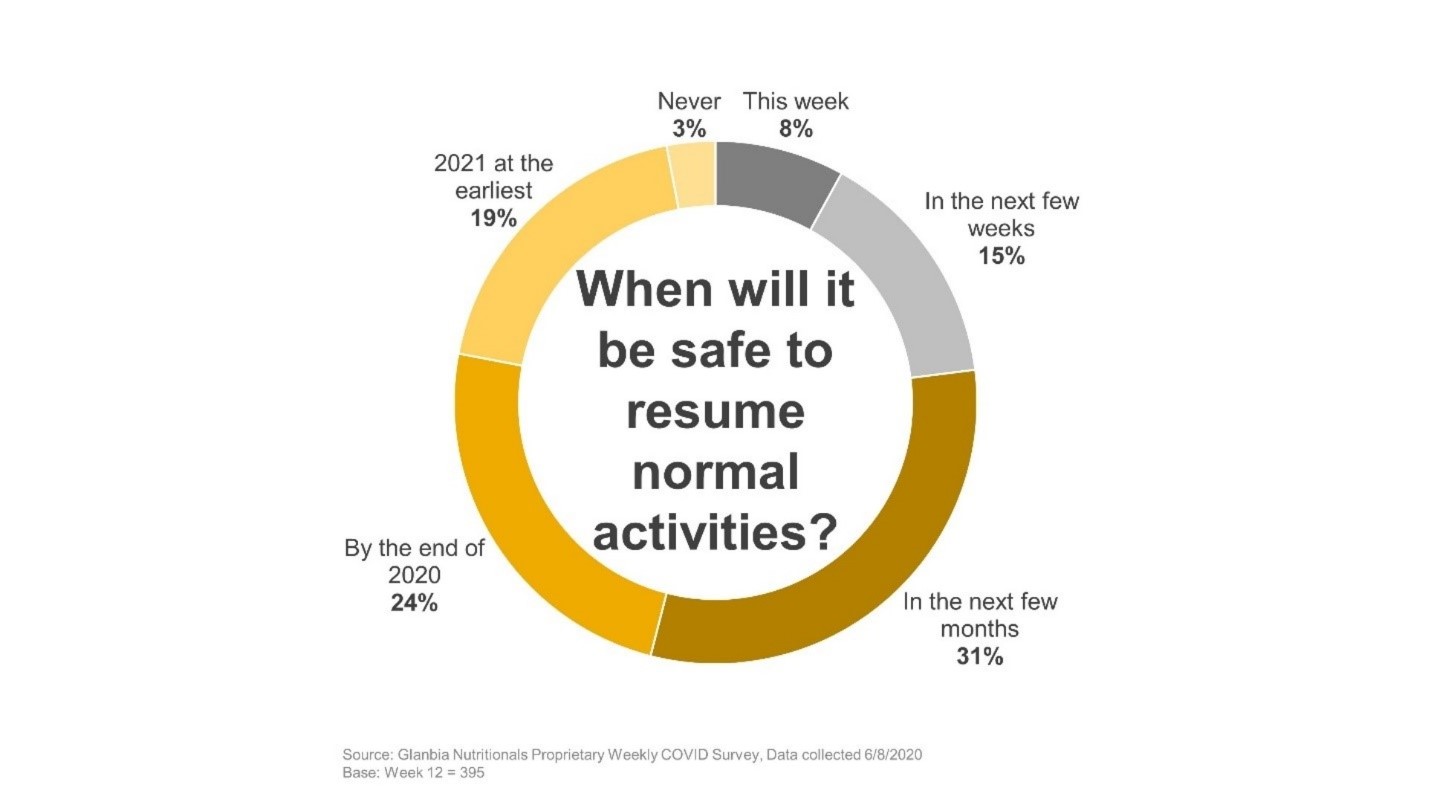Consumers Shifting from At-Home Cooking to Eating Out
As states across the country start to lift COVID-19 restrictions and consumers try to regain a sense of normalcy, restaurant eating is regaining traction. The results of our Week 12 consumer survey show a direct relationship between consumers’ decreases in cooking at home (down six points) and increases in eating at restaurants (up five points) over the prior week. The amount of time consumers are spending at home has likewise decreased (by three points) during the same time period.
As stay-at-home orders are lifted in stages around the country, consumers who are tired of cooking at home are looking to restaurants to provide a change of pace and inject some excitement into their routines. In addition, consumers in many communities are interested in supporting local restaurants to help them overcome recent economic challenges caused by COVID-19.




